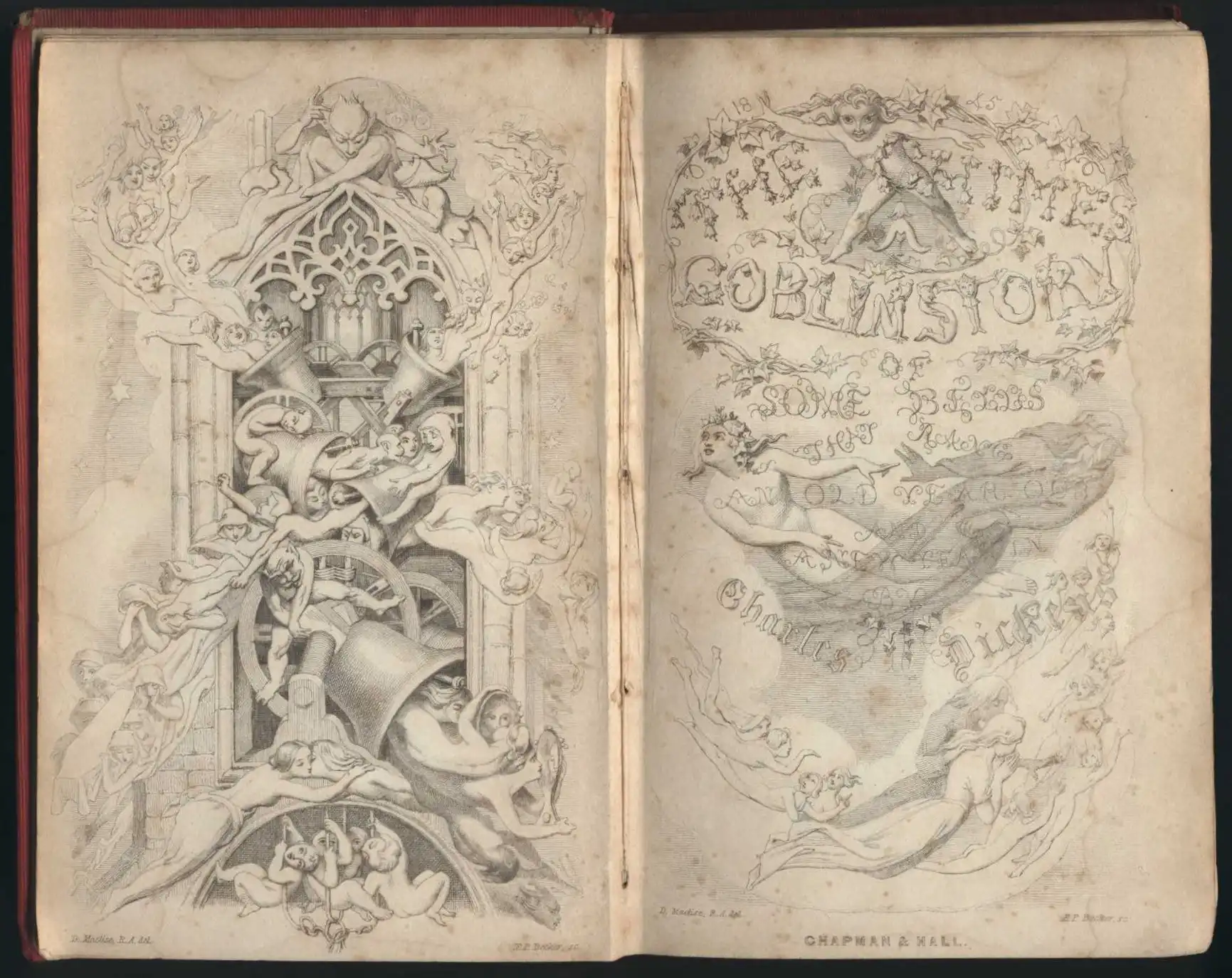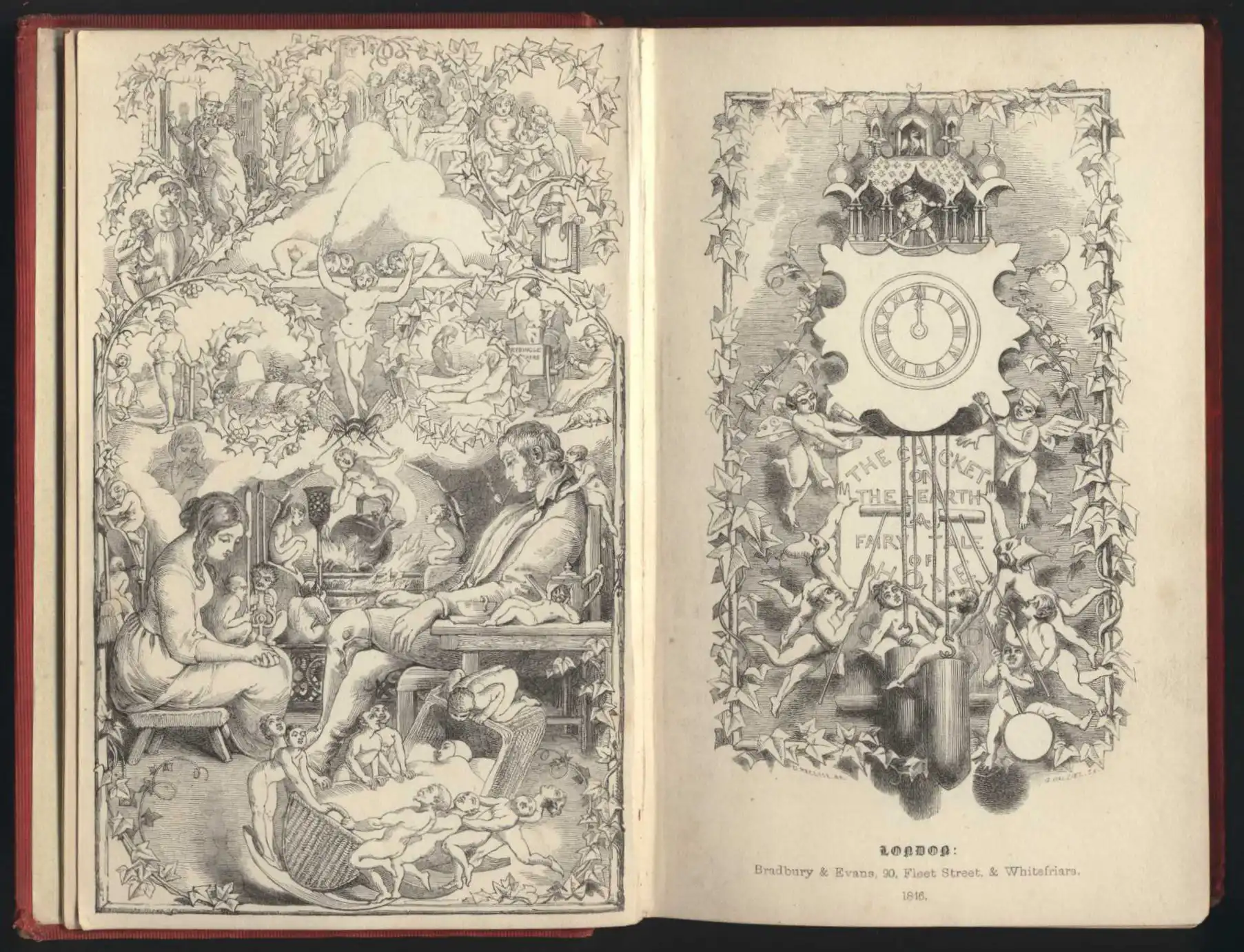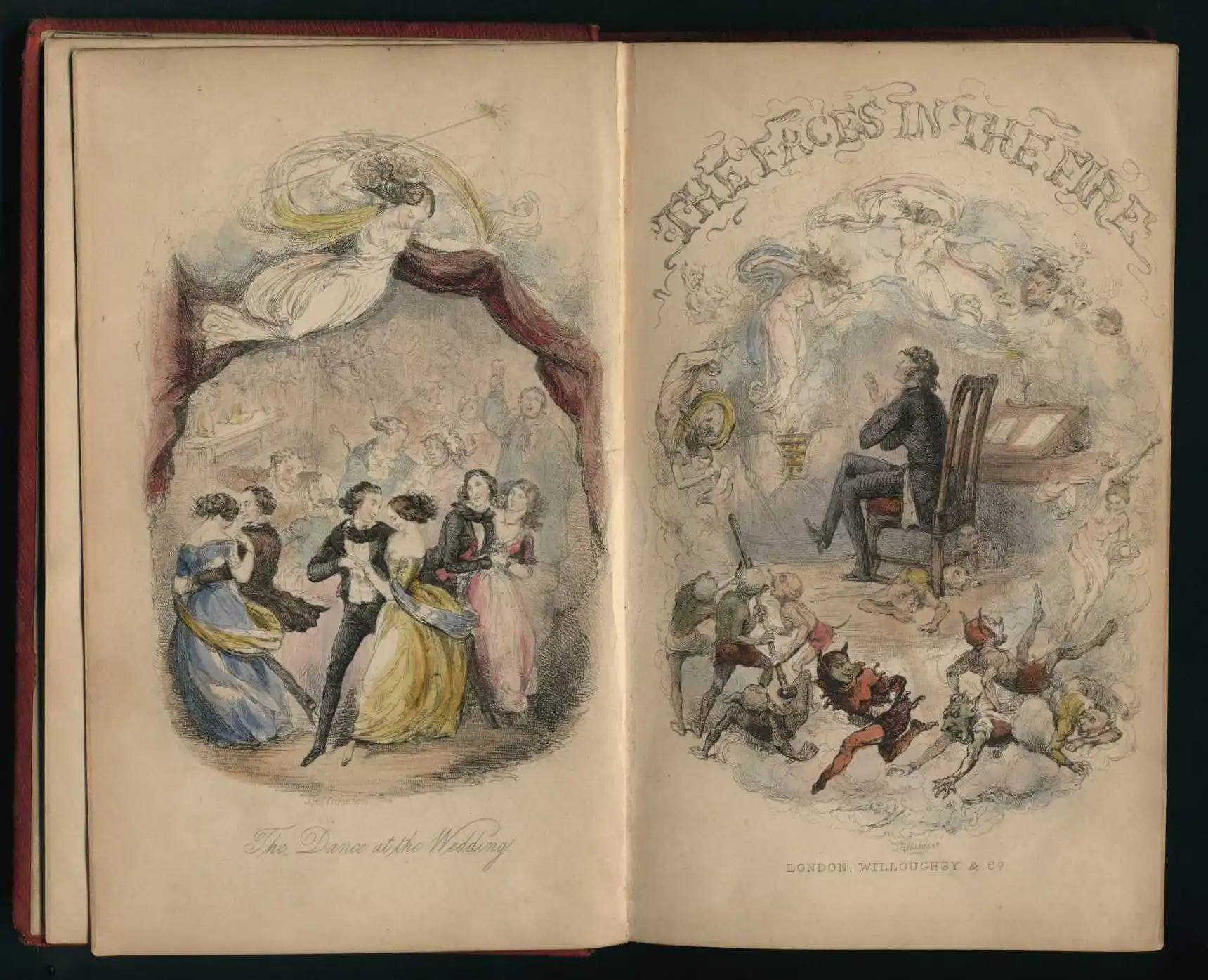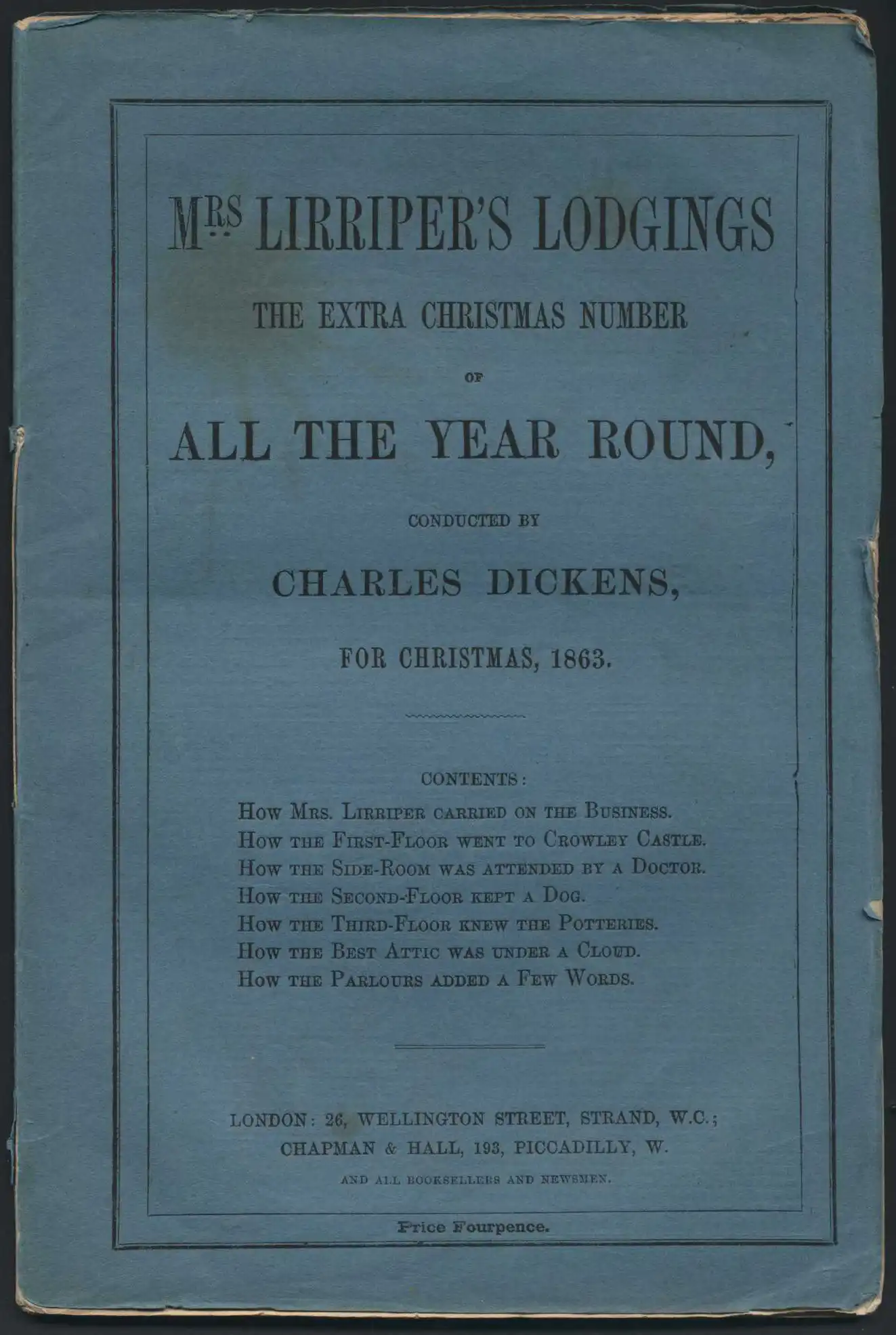Case W5
- A Dickensian Christmas 2

Charles Dickens. The chimes: a goblin story of some bells that rang an old year out and a new year in. London: Chapman & Hall, 1845.
The second of Dickens’ five Christmas books, The chimes was first released prior to Christmas in 1844, despite the 1845 publication date on this first edition.
Like its predecessor, A Christmas carol, The chimes has a strong moral message. It is the story of a nightmare or vision in which a poor, cynical old porter named Toby ‘Trotty’ Veck witnesses dreadful misfortunes befalling his daughter.

Charles Dickens. The chimes: a goblin story of some bells that rang an old year out and a new year in. London: Chapman & Hall, 1845.
Open image in new window

Charles Dickens. The cricket on the hearth: a fairy tale of home. London: Bradbury and Evans, 1846.
The third of Dickens’ five Christmas books, The cricket on the hearth was first released prior to Christmas in 1845, despite the 1846 publication date. A sentimental tale and less explicitly Christian than other Christmas books, its depiction of the Victorian ideal of the happy home made it very popular with contemporary readers.

Charles Dickens. The cricket on the hearth: a fairy tale of home. London: Bradbury and Evans, 1846.
Open image in new window

George Frederick Pardon. The faces in the fire: a story for the season. London: Willoughby and Co., 1849.
The faces in the fire by the English journalist George Frederick Pardon (1824-1884) was an imitation produced to resemble Dickens’ popular Christmas books. This rare first edition in original red cloth includes an added title-page with vignette and frontispiece hand-coloured in the style of A Christmas carol.

George Frederick Pardon. The faces in the fire: a story for the season. London: Willoughby and Co., 1849.
Open image in new window

Charles Dickens. “Mrs Lirriper’s Lodgings”. The extra Christmas number of All the Year Round, 1863.
The short story ‘Mrs Lirriper’s Lodgings’ was first published in 1863 as the extra Christmas number of the periodical All the year round. Of the seven chapters, the first and last were written by Charles Dickens.
Dickens was the editor of the weekly literary magazine Household words and its successor, All the year round. Household words issued an extra Christmas number annually in December from 1851-1858, a practice continued by All the year round, from 1859-1867.
The extra Christmas numbers of Household words and All the year round came to be known as Dickens’ Christmas stories. They were hugely popular in their day and appealed to the Victorian taste for family sentiment, romance and charming children.

Charles Dickens. “Mrs Lirriper’s Lodgings”. The extra Christmas number of All the Year Round, 1863.
Open image in new window



